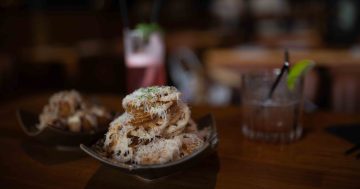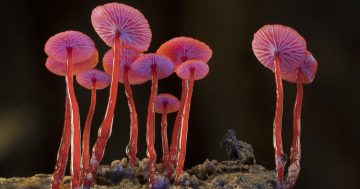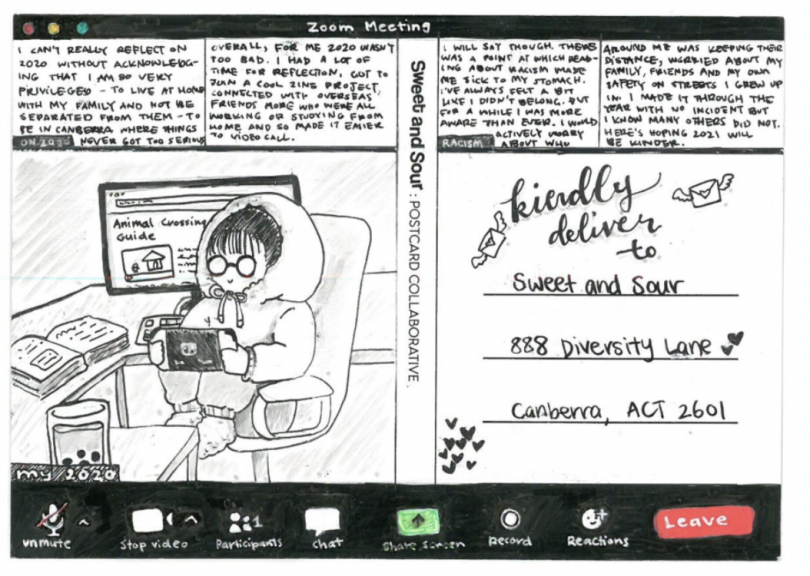
Some participants in the Sweet and Sour postcard exchange shared creative drawings about their experiences as Asian-Australians. Image: Sweet and Sour.
As COVID-19 spread across the world so did racism towards Asian people. To help counteract this experience for Asian-Australians, multimedia artist Sydney Farey started a free creative publication, Sweet and Sour, focusing on their experiences and supporting people feeling marginalised.
“The spread of COVID-19 catalysed a rise in xenophobia and made it clear that racism and discrimination against Asians is still very much prevalent in this country and around the world,” says Sydney.
“There were reports of increased anti-Asian incidents ranging from verbal abuse to physical violence – such that there was a fear for personal safety when going out. We continue to fight for our right to exist.
“As we battled the virus and persevered through the ups and downs of life, we were forced to reconsider what it meant for us to be Asian.”
Sydney established the quarterly creative publication in Canberra with members studying fine arts and design at the ANU School of Art. It was conceived with the notion of creating a space for individuals and communities with Asian heritage in Australia to share their thoughts, experiences and creativity. The Sweet and Sour team comprises 11 dedicated volunteers.
“Being Asian in Australia isn’t easy because when you belong to multiple cultural identities, there is a bizarre sense of existing between multiple worlds, yet not fully belonging to either,” she says.
“A lot of us have experienced acts of microaggression, such as harmful stereotypes, or more blatant racism that serves to emphasise our differences and contributes to that sense of ‘non-belonging’.”
In 2020, Sweet and Sour designed a series of postcards and sent them to individuals who identified as Asian from all across Australia. The postcards asked each person to write a response on the blank postcard to reflect on the COVID-19 pandemic with consideration to their Asian identity – and confront racism created by the pandemic.
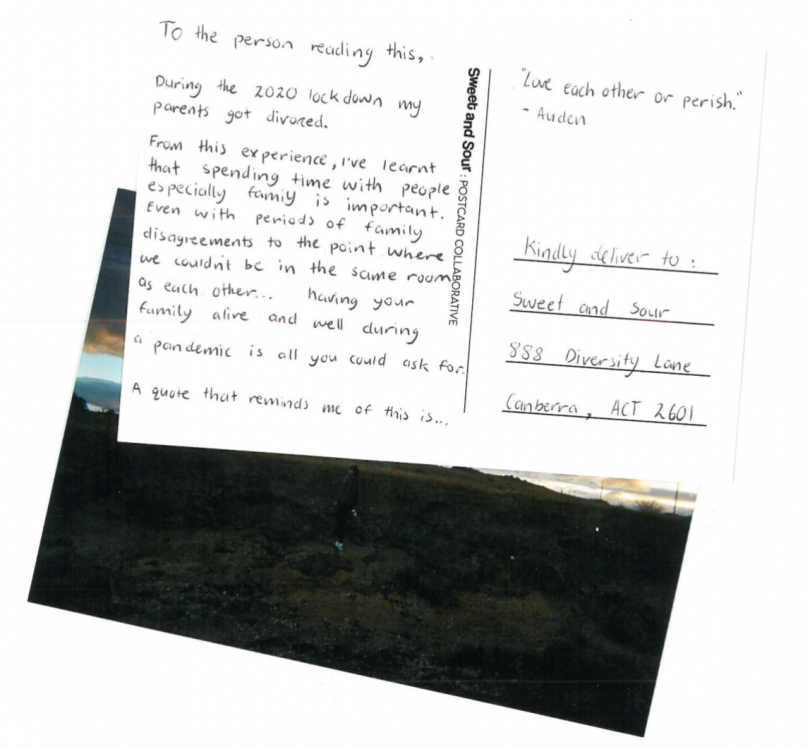
Sweet and Sour sent blank postcards to some Asian-Australians to return with reflections and lessons learnt during the COVID-19 pandemic. Image: Sweet and Sour.
In the postcard responses there are expressions of grief, reflections on missed opportunities, gratitude for friends and family, experiences with racism, and positivity in learning new things.
“It is a powerful feeling when we realise we are not alone and many of our experiences are shared with others,” says Sydney.
“We are international students, mixed-race individuals, second-generation immigrants, and many of us belong to multiple cultural identities. While the world labelled us Asian in 2020, we are so much more than that.
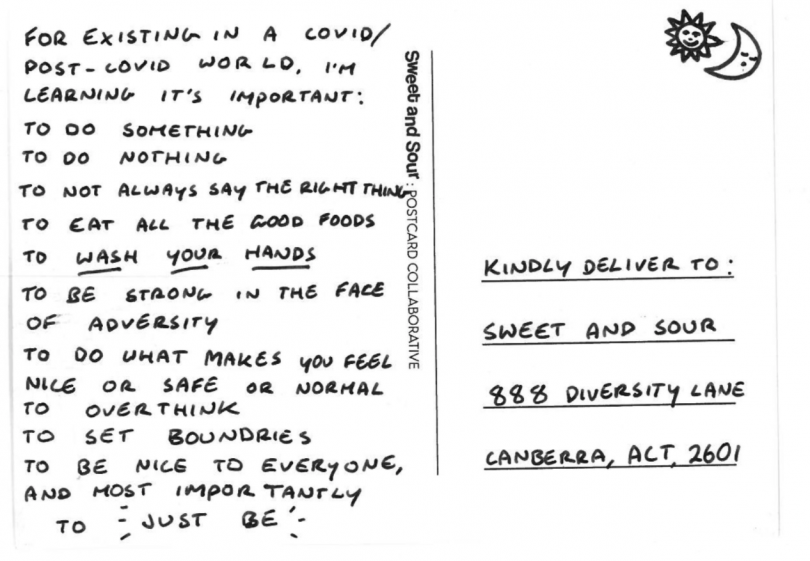
The Sweet and Sour postcards collected some of the personal lessons from Asian-Australians during the COVID-19 pandemic. Image: Sweet and Sour.
“The most valuable thing we learnt is they are not alone and many of their experiences and struggles are shared with others. Behind the statistics of racism and discrimination we see in news and media outlets are real people who have unique stories and experiences to share.”
Sydney was inspired to create something that could bring her community back together again, hoping to ease the pain of isolation and bring more support to the Asian-Australian community.
“Every word and illustration within our publication comes from an Asian creator, but is produced for everyone, no matter your race or culture,” she says.
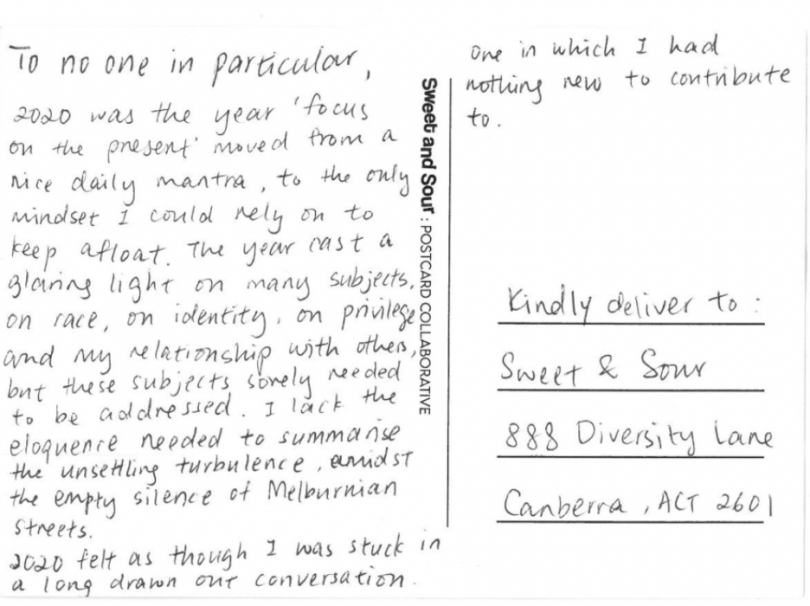
The reflections on the Sweet and Sour postcards are both personal and relatable. Image: Sweet and Sour.
“We are trying to bring the community back together, from hosting workshops and events, to curating exhibitions and collaborating with similar initiatives.
“We hope to nurture creativity within the Asian-Australian community and continue to shine a light on the Asian-Australian experience.
“I continue to be inspired everyday by the Asian-Australian community’s resilience and strength. The support shown towards Sweet and Sour has been incredible, with our first three issues and merch completely sold out.
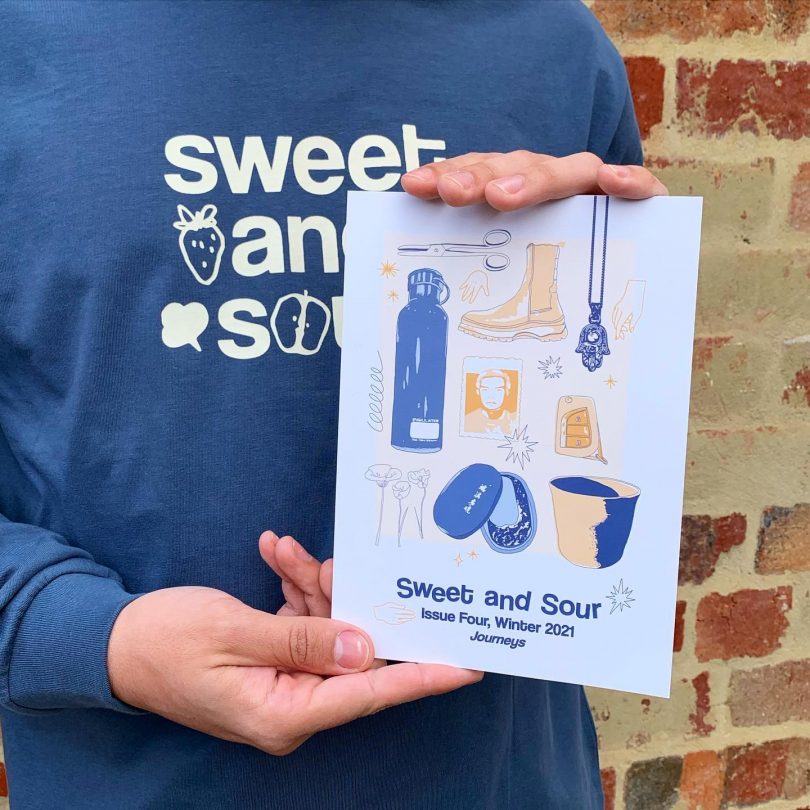
Sweet and Sour is a free magazine which you can order online. Photo: Sweet and Sour.
“It’s evident there is value in having more accessible spaces for Asian-Australians to come together as a community to share their thoughts and experiences. Furthermore, a lack of Asian representation within the contemporary arts scene calls for greater support of Asian-Australian creatives.”
You can order a free copy of issue four of Sweet and Sour, and learn more about the publication here.
Donations and merchandise purchases ensure Sweet and Sour can continue to support Asian-Australian creators.
Original Article published by Jeremy Jones on The RiotACT.


